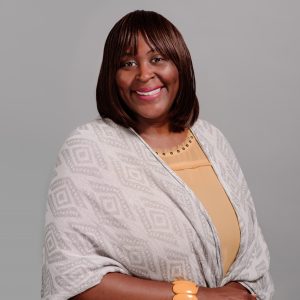Reflective Practices for Student-Centered Teaching
By Jilliam Joe, Ph.D. with contributions from Amy Allen, Connie Cielenski, Annie Dillon, Jen Stack-Driver, Monica Griffin, Jordan Gutterman, Quincy Jones, and Jannette Moya
The LEAP Programs and Research staff teamed up to explore the characteristics of an educator’s progression from teacher-centered to student-centered teaching in our professional learning programs. This article highlights self-reflection as a critical mechanism for transformational personalized learning.
Self-reflection is essential to impactful teaching and learning (Shandomo, 2010). The self-awareness that reflection encourages positions the educator to build complex skills and capacity to serve the spectrum of each student’s whole-child needs. LEAP’s Teaching Framework (an internal guide we use to pair teaching competencies with the LEAP Learning Framework) defines self-reflection in this way: To self-reflect is to monitor and examine the attitudes, behaviors, knowledge, and emotions one holds about their actions’ effectiveness.
In 2018, we asked a national sample of educators how often they encourage their students to reflect on the effectiveness of their efforts and learning strategies, a characteristic of the Learner Led pillar of our learning framework. Of the 2,852 respondents, 45 percent said half the time or less. Helping students take ownership of their learning requires educator and student routines in self-reflection. Educators who consistently model reflection inspire their students to adopt the practice themselves.
LEAP Innovations’ professional learning and coaching team has worked with hundreds of K-12 educators across the Chicagoland area to create learning experiences that ignite an individual learner’s potential. When teachers try out new student-centered practices, we stress the importance of using self-reflection to locate wins and growth opportunities. We bake guided reflection into the design of our program to encourage deeper learning and more thoughtful goal-setting.
Here is what we have noticed about educators’ reflective practice so far:
- Meaningful self-reflection is foundational to growth toward student-centeredness. The depth of reflection is often the key to successfully implementing a new strategy, especially after failure.
- Self-reflection that is grounded in evidence tends to result in more targeted next steps.
- Educators with a mindset and motivation to self-reflect get the most out of their professional learning experience.
- Strong instructional leadership that enables and holds teachers accountable for self-reflection fosters a reflective school culture.
How Do You Know Good Self-Reflection When You See It?
We identified five key self-reflection strategies educators use to learn and grow.
- Ask Questions. Educators ask questions at varying depths. As a result, they discover what they know and need to know. “Did I meet my goal? Why or why not?” “What will I do to move forward and learn from those I serve?”
- Use Data. Educators use student artifacts, assessment results, and student and peer feedback so personal blind spots do not bias the conclusions they make about their effectiveness.
- Make Connections. Educators connect what they heard in PD to what they achieved when trying out a student-centered strategy to learn from the experience.
- Explore Ideas. Educators explore ideas for improving and initiate the next steps.
- Show Vulnerability. Educators share their mistakes. They share what they have learned about themselves and their students with others.
What Professional Learning Opportunities Do Educators Need To Strengthen Self-Reflection?
As we have seen in our work, quality self-reflection requires both will and skill. We offer a few thoughts on how educators can grow the skill to reflect in ways that best serve their self-efficacy and ability to engage students, empower their agency, and foster critical 21st-century skills like critical thinking, problem-solving, and communication.
Generally, we encourage the educators we engage to record their self-reflections in writing for their work in our program. We provide question prompts to stimulate their attention to data and the goal they set at the beginning of the learning cycle. However, after reflecting on this approach, we recognized that different media may inspire some teachers to be more reflective. Therefore, we not only recommend designing professional learning and coaching to include formal “pauses” and prompts for self-reflection, but we also recommend providing educators with different choices for capturing their reflections (e.g., video, voice memo, writing). We will incorporate multimedia options in future professional learning offerings.
Once the teacher submits their reflection for review by an instructional coach or peer, the follow-up conversation should include a “playback” of their self-reflection. For example, “You talked about a variety of data points during your reflection like student assessments and survey data, and you set vital objectives for the next go-round. What types of questions did you ask yourself? What would help you get more out of your reflection time?” Collaborate on high-impact strategies to help them achieve increasingly productive reflection. There is a wealth of resources available in the public domain.
Instructional leaders need support in helping their teams to self-reflect effectively. We recommend professional learning opportunities for leaders to connect self-reflection and teaching quality among their staff.
Finally, there is no more powerful way to strengthen educators’ self-reflection skills than to have them modeled. Therefore, incorporate more self-reflection demonstrations and examples during coaching conversations and professional learning. What does it look like and feel like to have a courageous conversation with yourself?
Here are two exercises educators can use to strengthen their reflective practice:
Think of a lesson you recently taught. Pick one student. What alternative actions could you have taken to improve the learning experience for that student? What specific indicators of impact are you considering? Repeat this exercise with a different student in mind.
Ask yourself: What types of feedback are most useful to you for improving your instruction? Explain how you analyze the feedback and how you decide what you would like to improve. Identify one or two other feedback sources.
Effective self-reflection takes humility, vulnerability, and a growth mindset. Experiencing the ah-ha moments and growth that often come from it makes self-reflection worthwhile!

